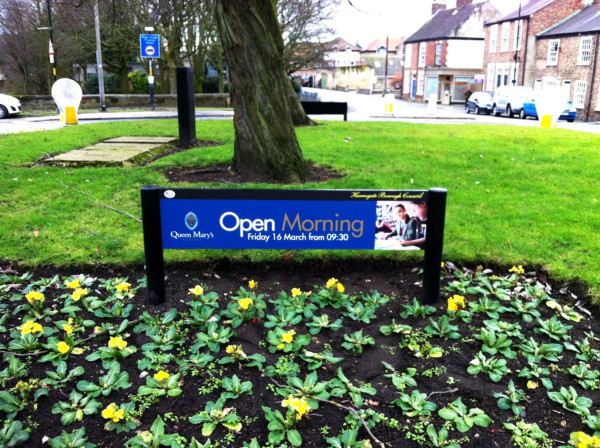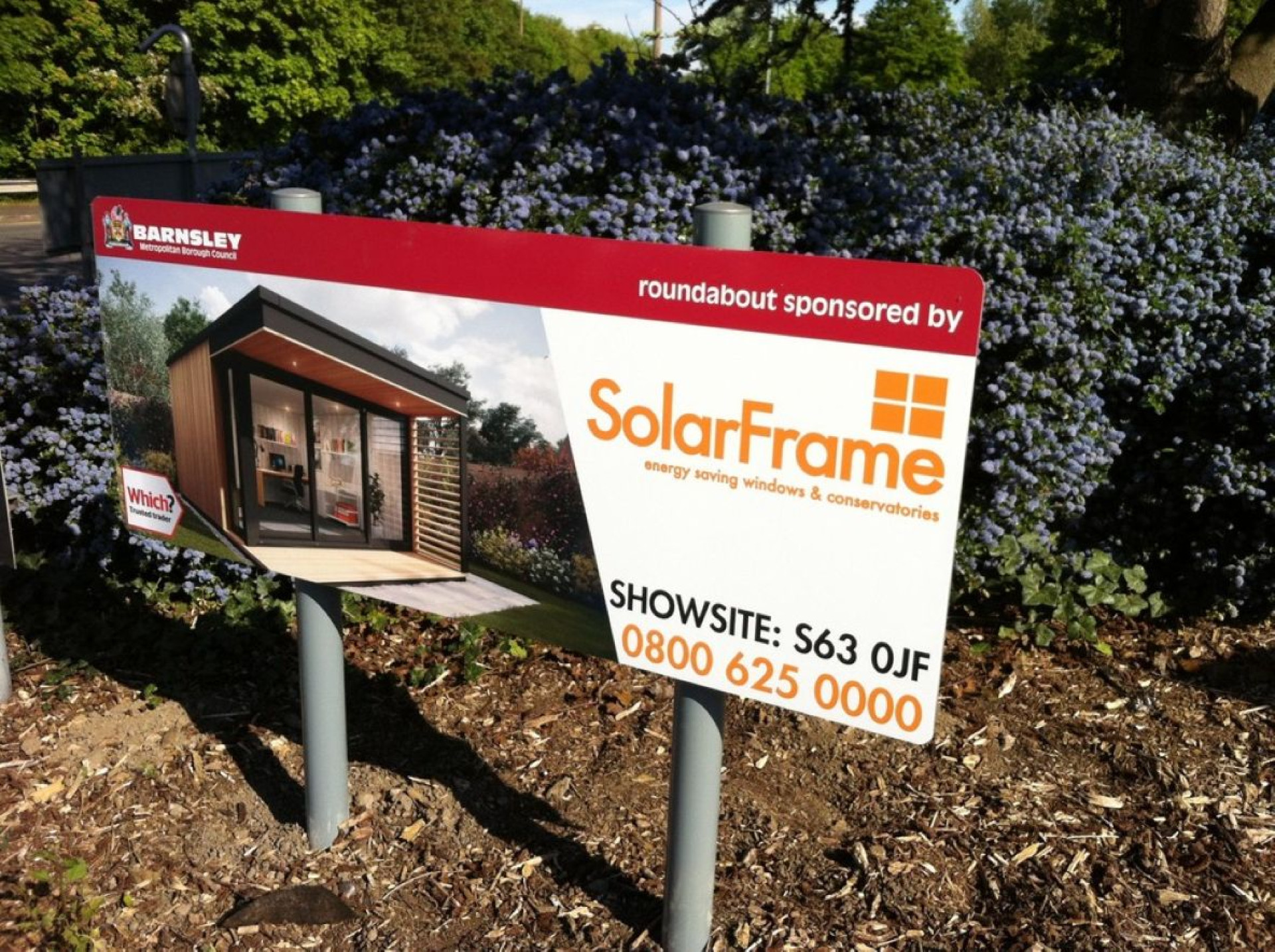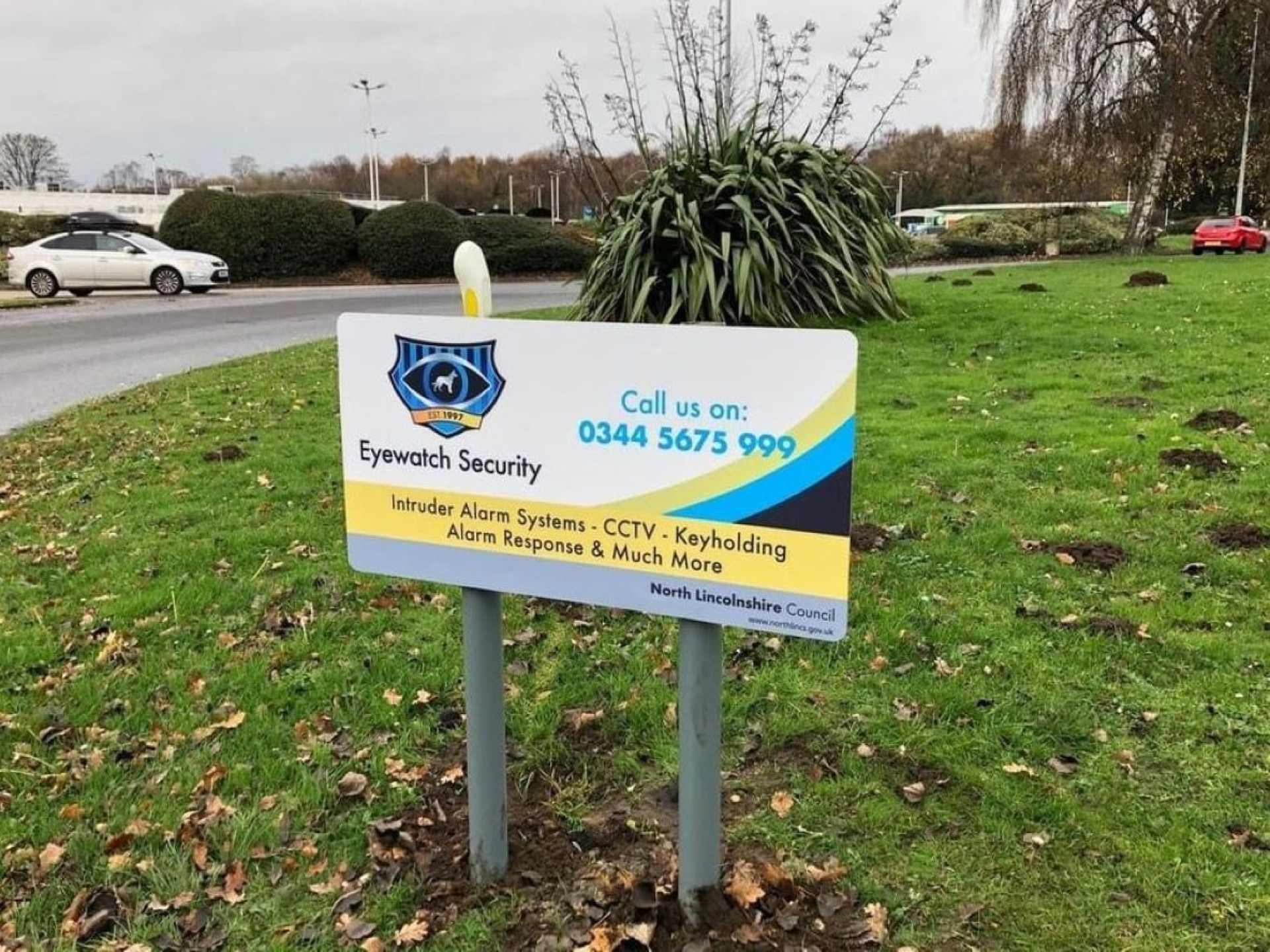Advertise on a Roundabout
High-Impact Roadside Advertising Solutions
Advertising on roundabouts can offer several unique advantages for businesses looking to reach local and passing audiences.
What Is Roundabout Advertising ?
Roundabout advertising is more comprehensive than it sounds. It refers to the practice of placing advertisements on or around roundabouts and traffic intersections that use circular roads to manage traffic flow. These ads are strategically positioned to capture the attention of drivers, pedestrians, and cyclists passing through or around the roundabout.
There are several ways roundabouts can be used for advertising, depending on the location, budget, and desired impact - Read on to discover why we think Roundabout Advertising is a hidden gem of the OOH advertising world.



Signage Around the Roundabout
Perimeter Signage: Large, traditional billboards or smaller signs can be placed along the roadways leading to or around the roundabout, ensuring visibility as vehicles approach or exit.
Traffic Light Ads: Digital or static ads may be displayed on traffic signals or poles near the roundabout, using locations guaranteed to be visible to drivers waiting at red lights.
Centre Island Advertising
Central Roundabout Signs: Some roundabouts have a large central island, which offers space for signage, banners, or even larger artistic advertisements. These ads are highly visible as they stand out during the traffic flow.
Sculptural/Artistic Installations: In some cases, advertisers may opt for creative, sculptural installations that serve as both artwork and advertisement. This can be an eye-catching way to integrate a brand into the community.


Roundabout Advertising Frequently Asked Questions
Does Roundabout Advertising Work?
Yes, roundabout advertising is highly effective for brand visibility. In the UK, roundabouts experience high daily traffic; for example, a busy roundabout can see over 40,000 vehicle movements daily. This provides continuous, 24/7 exposure, reinforcing brand recognition and targeting local communities effectively.
How do I advertise on the roundabout near me?
- Contact us with your ideal location.
- We'll then identify available locations and find something that best fits what you're looking for.
- We'll work with you to get the design up to spec.
- We'll apply with the proposed designs.
- Pay the required fee and finalise a contract.
- We'll then collaborate with approved designers to install compliant signage.
How much does roundabout advertising cost?
Roundabout advertising costs vary depending on a number of factors, including:
- The number of sites being booked
- The predicted audience delivery figures
- The duration of the advertising campaign
Based on your target audience and geographical area we can provide you with a fully costed proposal to meet your advertising objectives and fit with your budget.
Where can I advertise on roundabouts near me?
Roundabout advertising is subject to agreement by the Local Council in any given area. Roundabout advertising is only available where Council permission has been granted. More and more local Councils are implementing roundabout advertising as it is a valuable source of revenue for them, so it is highly likely that there will be options in your target area.
What are the benefits of roundabout advertising?
Roundabout advertising is a cost-effective, extremely effective and trusted solution for building a local brand presence, with repeated exposure (generally daily) increasing brand recall. It gives the ability to target local (and regional) audiences and helps build a reputation in the local community.
How does Roundabout Advertising work?
Roundabout advertising involves placing promotional content (such as signs, banners, digital displays, or sculptures) on or around a roundabout to capture the attention of drivers, pedestrians, and cyclists passing through. Roundabouts are traffic junctions where roads form a circular route around a central island. They are often located in high-traffic or highly visible areas, and advertising in such locations can be a highly effective way to increase local visibility and brand awareness.

How Much Is it to Sponsor a Roundabout ?
The cost to sponsor a roundabout in the UK can vary widely depending on several factors, such as location, the size of the roundabout, the level of traffic it serves, and the type of sponsorship package you're looking for.
Depending on these variables, sponsorship costs can range from a few thousand pounds to tens of thousands of pounds annually.

Benefits of Roundabout Advertising
High Visibility & Repeat Exposure
Roundabouts are high-traffic areas where drivers slow down—making ads hard to miss and frequently seen, boosting brand recall.
Local Targeting
Perfect for reaching specific communities, commuters, or tourists based on the roundabout’s location near homes, schools, or landmarks.
Cost-Effective & Long-Lasting
Offers affordable, long-term visibility compared to traditional media, with ads staying in place for extended periods.
Creative & Flexible Formats
Supports diverse ad types—signs, sculptures, digital displays—allowing for eye-catching, memorable campaigns.
Low Competition, High Impact
Less saturated than other ad spaces, making your message stand out more clearly in a local setting.
Community Engagement & Positive Perception
Ads can reflect local culture or support beautification, enhancing public goodwill and strengthening community ties.


What affects the Cost of Roundabout Sponsorship:
High-Traffic Location – Roundabouts in busy urban areas or near major roads are more expensive due to greater visibility and higher brand exposure potential.
Low-Traffic Location – Suburban or rural roundabouts cost less due to lower traffic and visibility.
Large Roundabouts – Bigger roundabouts with more space for signage or elaborate branding usually come with higher sponsorship costs.
Small Roundabouts – Limited space and prominence typically reduce the sponsorship cost.
Basic Sponsorship – Simple signage or logos placed around the roundabout is a lower-cost option.
Comprehensive Sponsorship – Involves extensive branding such as landscaping, custom designs, or digital ads, often requiring a higher investment and longer commitment.



Roundabout Sponsorship Summary
Duration Options:
Short-term (event or seasonal) is more affordable.
Long-term (1–3 years) offers better value and consistent exposure.
Cost Estimates:
Small/Low-Traffic Roundabout: £3,000–£10,000/year.
High-Traffic/Central Roundabout: £10,000–£50,000+/year.
Premium Packages: £50,000+/year for extensive branding, landscaping, or digital displays.
Additional Costs:
Maintenance, installation, and digital advertising may incur extra fees.
Example Packages:
Simple Branding: £5,000–£15,000/year in suburban areas.
Corporate Sponsorship: £20,000–£50,000+/year for high-visibility urban locations.




